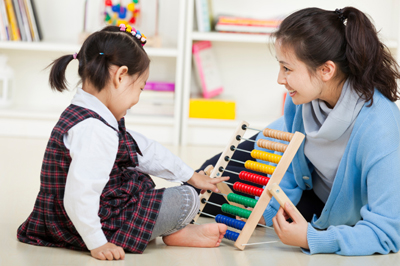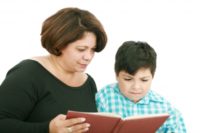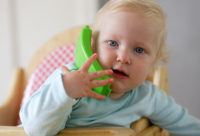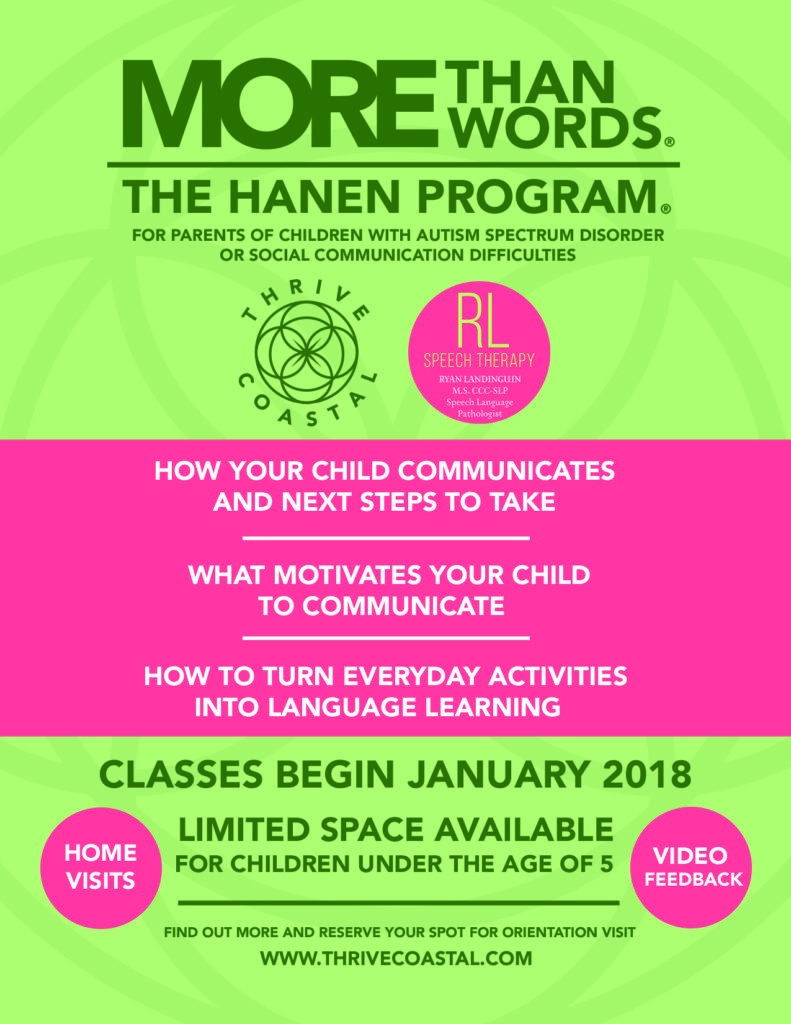Do you have a child 3 years old or younger? Are you worried because your child doesn’t seem to listen? Has your child started to say any words? Does your child cry a lot or have tantrums? Your child may have early signs of a speech, language, or hearing disorder.
My 2½-year-old, Evan, doesn’t talk at all. He doesn’t respond when I call his name. He turns the pages of a book, but doesn’t pay any attention when I read to him. He shows me what he wants, but doesn’t use words. He doesn’t do what I ask him to do. He gets upset when I don’t understand him. Is this normal? Does he just need more time to catch up?
Don’t wait and hope your child will outgrow a communication problem. Early spoken language disorders can result in problems with reading, writing, and learning. They also may lead to problems with social skills, like making friends. Early detection leads to early treatment. The earlier you get help for your child, the better.
Speech-language pathologists (SLPs) help children of all ages who have spoken and written language disorders, speech sound disorders, stuttering (disfluency), and voice disorders. Audiologists help children with a hearing loss. Children may have one or more of these communication disorders.
Identify the Signs
Here are some of the signs to help you determine if your child has a speech, language, or hearing disorder. It helps to know about typical speech and language development. More information about identifying the signs of communication disorders is available at Identify The Signs.
Signs of a Language Disorder
A language disorder may be spoken and/or written (reading and writing). It may also be receptive (understanding) and/or expressive (talking, reading, writing, or signing).
- Doesn’t smile or interact with others (birth–3 months)
- Doesn’t babble (4–7 months)
- Makes few sounds (7–12 months)
- Does not use gestures (e.g., waving, pointing) (7–12 months)
- Doesn’t understand what others say (7 months–2 years)
- Says only a few words (12–18 months)
- Doesn’t put words together to make sentences (1½–2 years)
- Says fewer than 50 words (2 years)
- Has trouble playing and talking with other children (2–3 years)
- Has problems with early reading and writing skills—for example, may not show an interest in books or drawing (2½–3 years)
Ways to Help With Language Disorders
- Listen and respond to your child
- Talk, read, and play with your child
- Communicate with your child in the language that you are most comfortable using
- Know that it’s good to teach your child to speak a second language
- Talk about what you are doing and what your child is doing
- Use a lot of different words with your child
- Use longer sentences as your child gets older
- Have your child play with other children
Signs of a Speech Sound Disorder
- Says p, b, m, h, and w incorrectly in words most of the time (1–2 years)
- Says k, g, f, t, d, and n incorrectly in words most of the time (2–3 years)
- Produces speech that is unclear, even to familiar people (2–3 years)
Ways to Help With Speech Sound Disorders
- Say the sounds correctly when you talk—it’s okay if your child makes some mistakes with sounds
- Don’t correct speech sounds—it’s more important to let your child keep talking
Signs of Stuttering (Disfluency)
- Struggles to say sounds or words (2½–3 years)
- Repeats first sounds of words—”b-b-b-ball” for “ball” (2½–3 years)
- Pauses a lot while talking (2½–3 years)
- Stretches sounds out—”f-f-f-f-farm” for “farm” (2½–3 years)
Ways to Help With Stuttering or Disfluency
- Give your child time to talk
- Do not interrupt or stop your child while he or she is speaking
- See an SLP if you are concerned (Many young children stutter for a short period of time; in most cases, the stuttering will stop.)
Signs of a Voice Disorder
- Uses a hoarse or breathy voice
- Uses a nasal-sounding voice
Ways to Help With Voice Disorders
- See a doctor if your child sounds hoarse or breathy or has a nasal-sounding voice
- Tell your child not to shout or scream
- Keep your child away from cigarette smoke
Audiologists help with hearing loss.
Signs of a Hearing Loss
- Shows lack of attention to sounds (birth–1 year)
- Doesn’t respond when you call his/her name (7 months–1 year)
- Doesn’t follow simple directions (1–2 years)
- Shows delays in speech and language development (birth–3 years)
Ways to Help With Hearing Loss
- See an audiologist if your child did not pass the newborn hearing screening
- Go to an audiologist if you have any concerns about your child’s hearing (some hearing losses can begin months or years after birth).
- Ask your audiologist about the need for hearing aids or cochlear implants
Act Today
Early intervention leads to better results. Do not wait to get help if you have concerns. Free or low-cost public services are available for infants and toddlers (birth to age 3 years). Contact your local school to find out about early intervention programs.
How Can I Find an SLP or Audiologist?
Look for an SLP or audiologist who has earned the Certificate of Clinical Competence (CCC) from ASHA. ASHA-certified SLPs have “CCC-SLP” after their names. ASHA-certified audiologists have “CCC-A” after their names.
An ASHA-certified SLP or audiologist
- has a master’s degree or doctoral degree,
- has a state license to practice,
- has a teaching certificate if required,
- participates in continuing education activities.
To locate an SLP or audiologist in your area, go to ASHA ProFind.






Leave A Comment